Fire safety of ventilation chambers: rules and regulations for equipment in special premises
When designing a building, it is very important that the fire safety of ventilation chambers is designed as competently as possible. Only in this case can they help minimize the spread of fire and will not spread the fire.
On the one hand, it seems that this is a complex engineering and fire safety issue, but in fact, everything has been calculated for a long time and often it is enough just to comply with the current norms and rules established at the advisory and mandatory level.
But what kind of documents these are and how to understand the basic concepts and standards, we will now tell you in detail.
The content of the article:
What documents standardize ventilation design?
In order not to be unfounded, we will provide a list of documents that should be relied upon when complying with fire safety standards for ventilation chambers.
This:
- Government Decree No. 390
- SP 60.13330.2012
- SP 7.13130.2013
- SP 5.13130.2009
- Federal Law No. 123
- NPB 110-03
Previously, developers relied on SNiP 2.04.05-86, which was called “Heating, ventilation and air conditioning” and was approved by the USSR State Construction Committee. However, this document no longer has a valid status and although it was quite often replaced by new rules, it was considered the most applicable to this problem.
The documents SP 60.13330.2012 and SP 7.13130.2013 are currently relevant. They apply to the design of air exchange and other engineering systems in buildings and structures.
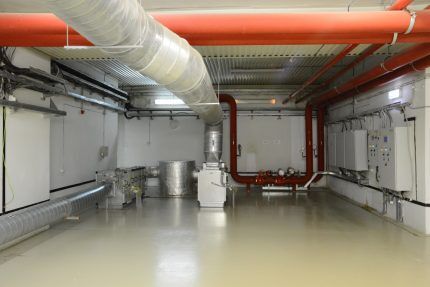
SP 7.13130.2013 was approved by the Ministry of Emergency Situations by Order No. 116, as ensuring the rules of Federal Law No. 123 - “Technical Regulations on Fire Safety Requirements”. At the same time, SP 60.13330.2012 refers to the points we need from this document and these paragraphs are included in RF PP No. 1521 dated December 26, 2014, that is, in the list of national standards on the basis of which the requirements of the TR are met.
Of course, even PP No. 1521 can in some cases be challenged in court, but we will not raise this issue, because adherence to principles can play a cruel joke in the issue of people’s safety.
Let's look at what these documents say about ventilation chambers.
Fire extinguishing and fire warning equipment for ventilation chambers
According to safety standards, it is necessary to install fire extinguishing devices and devices in cases where there are people or property in the room. Ventilation plenums typically contain expensive equipment that can be considered valuable property.
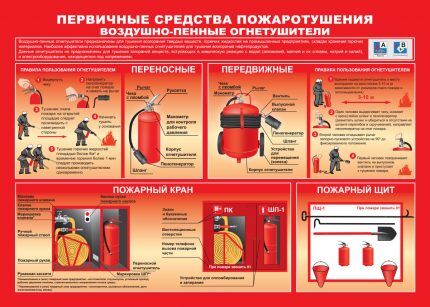
Meanwhile, let us turn to Federal Law No. 123, which specifies the places for the mandatory installation of fire extinguishing equipment.It says that a detailed list is in SP 5.13130.2009, in Appendix A. Where, in turn, there is a clause stating that such instruments and devices are not required in ventilation chambers, unless, of course, they serve industrial facilities, belonging to categories A and B or do not have flammable materials.
The same is stated in NPB 103-10, which also regulates the list of premises that require special equipment for warning and fire extinguishing.
Electrical wiring in ventilation plenums
The structural system of the ventilation plenums usually contains electrical wiring that connects to heaters, fans and other elements of supply and exhaust structures.
It goes without saying that functioning wiring can become both a source of fire and a reason for its rapid spread.
Again, it is recommended to secure this moment. So in SP 5.13130.2009, in paragraph 4.1 it is stated that fire-resistant power cable intended for smoke removal systems and ventilation should be with copper conductors, have a low emission of gases and fumes during combustion and in no case contribute to the spread of fire when laid in a group according to A-class.
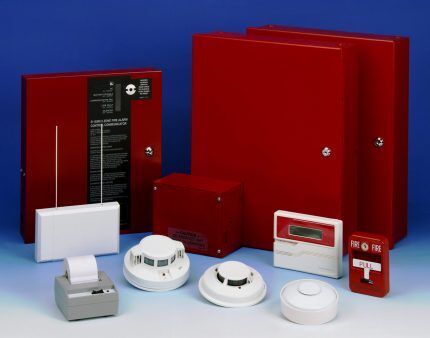
As you can see, the requirements are not strict, but at the same time, there are also standards for ventilation chamber materials.
Guided by SP 7.13130.2013, enclosing structures when the camera is located in a serviced fire compartment must be made of materials with fire resistance of EI 45.
If the ventilation chamber is located outside the fire compartment attached to it, the structural fire resistance of the fences is EI 150.
Fire safety categories for ventilation chambers
Ventilation chambers installed anywhere in the building must meet all fire safety requirements for the specific premises they serve.
According to Federal Law No. 123, it is necessary to assess the fire safety risk of the premises. As a basis, you can take orders of the Ministry of Emergency Situations No. 382, 404, as well as paragraphs 6.6-6.7 of SP 7.13130.2013 for typical ventilation chambers and SP 12.13130.2009 for compartments in which there is a flammable load.
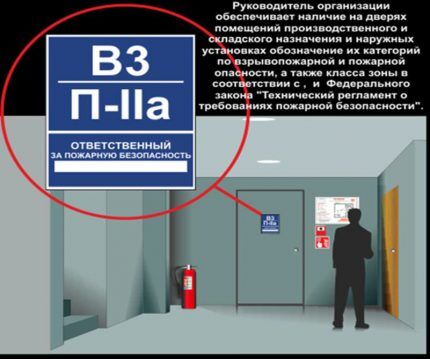
In clause 6.6 of SP 7.13130.2013 there is a clear definition of the categories of premises for exhaust ventilation equipment. The document states that they are classified according to the objects they serve.
And:
- When placing general ventilation devices for residential, public, administrative buildings, if they have fans, compressors, blowers and, in addition, also if local suction systems with wet dust collectors are installed - this is category D.
- If there are local suction systems designed to remove explosive mixtures - A, B.
The category of extreme danger is when the system serves premises of different fire safety classifications.
The exhaust systems have been disassembled, now about the supply systems, if they are separate.
The principle of division and classification is approximately the same as in the previous paragraph.

Please note that a room with ventilation equipment and a separate ventilation chamber are concepts that are close in meaning, but different in design.
Paragraph 6.7 is intended for supply systems:
- If filters and other equipment with oil from 75 liters are installed in the ventilation chamber room in any of the installations - B1.
- With functioning recirculation, provided there are no wet dust collectors or no emissions in the form of flammable gases - B1, B2, B3, B4, D.
- Also in accordance with the category of the premises, provided that it relates to B1, B2, B3, B4.
- If the serviced premises have gas-powered equipment - G.
When working with recycling for several categories of premises, the most dangerous is taken as given.
Next, based on the studied materials + area of the room, a fire risk calculation is carried out and, accordingly, it is equipped with protective systems in accordance with the assigned category.
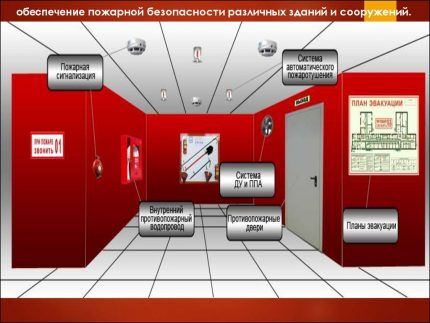
However, you won’t have to load yourself up with gas masks, sandboxes, shovels and other supplies.Everything is much simpler and the law is quite loyal to some points.
Let's consider the rules for the structural arrangement of ventilation chamber air ducts.
Fire safety of internal systems
We will analyze paragraph 6 of the aforementioned SP 7.13130.2013, which is called “Fire safety of ventilation systems...”.
The rule states that all ventilation systems in each fire compartment are equipped in accordance with the assigned fire safety category.
When designing a ventilation system, it should be understood that it is not necessary to make common air duct intake structures for smoke control and fresh air ventilation in a single fire compartment.
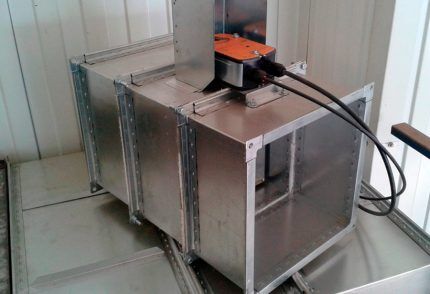
The list of categories that are not subject to exceptions is in paragraph 6.4 of SP 7.13130.2013.
However, designers still try to make separate ventilation shafts for all rooms, at least most often. The thing is that the purpose of the rooms often changes.
For example, there was a category D warehouse and there was nothing fire hazardous in it. But suddenly it was retrained and flammable materials began to be stored there. The service life of a warehouse is short, but redoing the entire air exchange structure is extremely problematic later
As for common receiving devices for smoke control and supply systems in different compartments, it is not recommended to provide such structures and even set the distance between adjacent ones at 3 meters.But it is allowed if fire-retarding valves with control are installed on the inlets, so that it is possible to isolate the spread of fire if necessary.
Conclusions and useful video on the topic
A gross violation of fire safety standards for ventilation chambers. There is an underground office in an isolated room and, in addition, there is smoking here:
The design and installation of ventilation chambers should be carried out by professional engineers. The project must be developed, approved and implemented with all regulatory requirements, in accordance with the category assigned to the object. At the same time, accurate calculations are carried out and a list of mandatory and recommended protective measures is compiled.
Remember that a well-designed ventilation chamber that complies with fire safety requirements will not only help you avoid problems with inspections from the relevant structures, but will also save you and your employees’ lives.
Have you ever designed ventilation chambers at your facility? What challenges did you encounter when installing their fire protection system? Share your experience in the comments and ask questions about the topic of the article.



